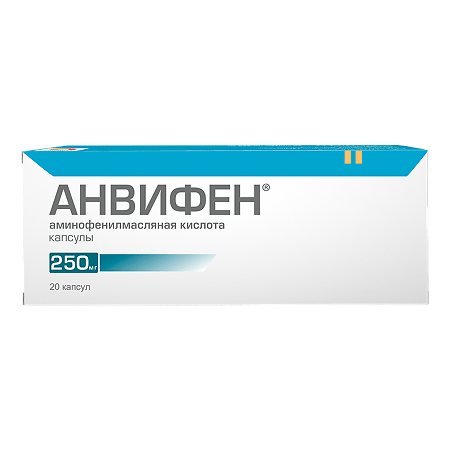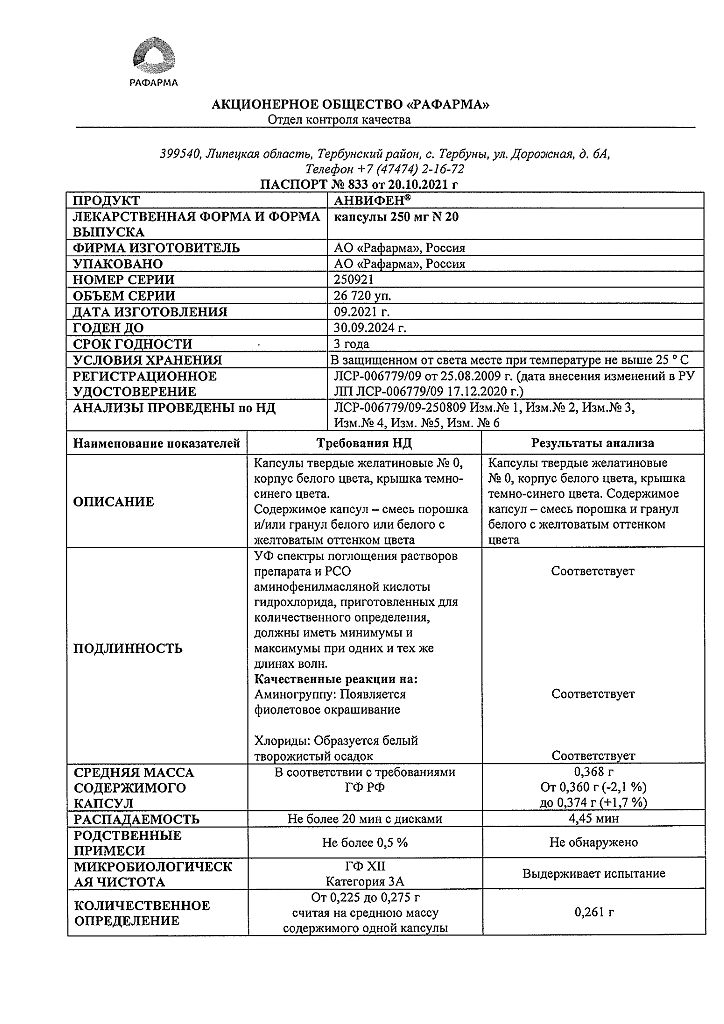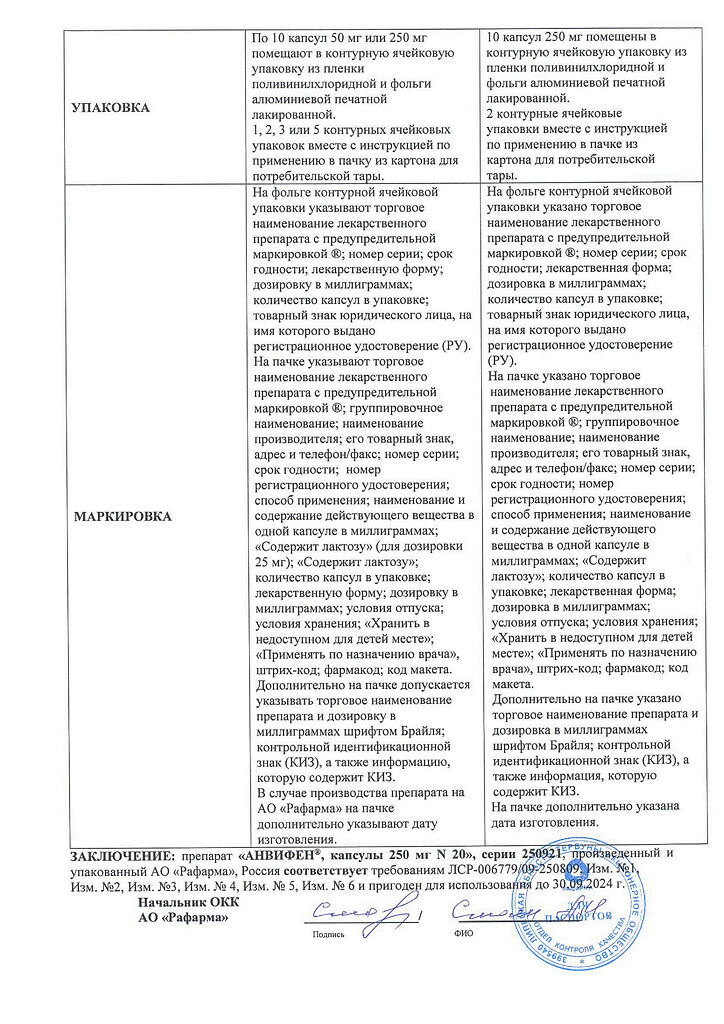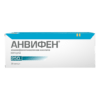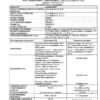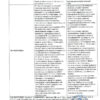No products in the cart.
Anvifen, capsules 250 mg 20 pcs
€12.85 €10.71
Out of stock
(E-mail when Stock is available)
Description
Pharmacological action – anti-aggregant, tranquilizing, nootropic, anticonvulsant, antioxidant.
Pharmacodynamics
Notropic, facilitates GABA-mediated transmission of nerve impulses in the CNS (direct effect on GABAergic receptors). The tranquilizing effect is combined with an activating effect. It also has antiaggregant, antioxidant and some anticonvulsant effects.
It improves the functional state of the brain by normalizing its metabolism and influence on the cerebral blood flow (increases the volumetric and linear velocity, reduces the vascular resistance, improves microcirculation, has an anti-aggregant effect). It lengthens the latent period and shortens the duration and severity of nystagmus.
It does not affect the choline and adrenoreceptors. It reduces vaso-vegetative symptoms (including headache, feeling of heaviness in the head, sleep disorders, irritability, emotional lability). With a course of treatment improves physical and mental performance (attention, memory, speed and accuracy of sensory-motor reactions).
Limits manifestations of asthenia (improves well-being, increases interest and initiative – motivation of activity) without sedation or agitation.
Contributes to reducing feelings of anxiety, tension and restlessness, normalizes sleep.
In the elderly it does not cause CNS depression, muscular relaxant aftereffects are most often absent.
Pharmacokinetics
Absorption and distribution
. Absorption is high, penetrates well into all body tissues and through the BBB (about 0.1% of the administered dose penetrates into brain tissue, and to a greater extent in young and elderly persons). It is evenly distributed in the liver and kidneys.
Metabolism and excretion
Metabolized in the liver – 80-95%, metabolites are pharmacologically inactive. It does not cumulate. After 3 hours it is eliminated by the kidneys, while the concentration in the brain tissue is not decreased and is detectable for another 6 hours. About 5% is excreted unchanged by kidneys, partially in bile.
Indications
Indications
Asthenic and anxiety-neurotic conditions. Stuttering, tics and enuresis in children.
Insomnia and night anxiety in the elderly.
Meniere’s disease, dizziness associated with dysfunction of the vestibular analyzer of various origins; prevention of motion sickness during kinetosis.
As part of complex therapy of alcohol withdrawal syndrome for the relief of psychopathological and somatovegetative disorders.
Pharmacological effect
Pharmacological effect
Pharmacological action – antiplatelet, tranquilizing, nootropic, anticonvulsant, antioxidant.
Pharmacodynamics
A nootropic agent that facilitates GABA-mediated transmission of nerve impulses to the central nervous system (direct effect on GABAergic receptors). The tranquilizing effect is combined with an activating effect. It also has antiplatelet, antioxidant and some anticonvulsant effects.
Improves the functional state of the brain by normalizing its metabolism and influencing cerebral blood flow (increases volumetric and linear velocity, reduces vascular resistance, improves microcirculation, and has an antiplatelet effect). Extends the latent period and shortens the duration and severity of nystagmus.
Does not affect cholinergic and adrenergic receptors. Reduces vasovegetative symptoms (including headache, feeling of heaviness in the head, sleep disturbance, irritability, emotional lability). When taken as a course, it increases physical and mental performance (attention, memory, speed and accuracy of sensory-motor reactions).
Reduces manifestations of asthenia (improves well-being, increases interest and initiative – motivation for activity) without sedation or agitation.
Helps reduce feelings of anxiety, tension and restlessness, and normalizes sleep.
In elderly people, it does not cause depression of the central nervous system; the muscle-relaxing aftereffect is most often absent.
Pharmacokinetics
Suction and distribution
Absorption is high, penetrates well into all tissues of the body and through the BBB (about 0.1% of the administered dose of the drug penetrates into brain tissue, and in young and elderly people to a much greater extent). Evenly distributed in the liver and kidneys.
Metabolism and excretion
Metabolized in the liver – 80–95%, metabolites are pharmacologically inactive. Does not cumulate. After 3 hours, it begins to be excreted by the kidneys, while the concentration in the brain tissue does not decrease and is detected for another 6 hours. About 5% is excreted by the kidneys unchanged, partially with bile.
Special instructions
Special instructions
With long-term use, it is necessary to periodically monitor liver and peripheral blood function indicators.
Impact on the ability to drive vehicles and operate machinery.
It is necessary to refrain from potentially dangerous activities that require increased concentration.
Active ingredient
Active ingredient
Aminophenylbutyric acid
Composition
Composition
Active ingredient:
aminophenylbutyric acid hydrochloride – 250 mg
Excipients:
iprolose – 2 mg;
colloidal silicon dioxide – 8 mg;
lactose – 86.5 mg;
magnesium stearate – 3.5 mg
Hard gelatin capsule:
for a dosage of 250 mg – water, gelatin, azorubine dye (E122), brilliant blue dye (E133), titanium dioxide (E171)
Pregnancy
Pregnancy
Contraindicated during pregnancy and lactation (breastfeeding).
Contraindications
Contraindications
Hypersensitivity, pregnancy, breastfeeding, children under 3 years of age.
With caution: in case of erosive and ulcerative lesions of the gastrointestinal tract, liver failure.
Side Effects
Side Effects
Drowsiness, nausea. Increased irritability, agitation, anxiety, dizziness, headache (at first doses), allergic reactions.
Interaction
Interaction
Extends and enhances the effect of hypnotics, narcotic analgesics, neuroleptics, antiparkinsonian and antiepileptic drugs.
Overdose
Overdose
Symptoms: severe drowsiness, nausea, vomiting, fatty liver (ingestion of more than 7 g), eosinophilia, decreased blood pressure, impaired renal function.
Treatment: gastric lavage, administration of activated carbon and symptomatic therapy.
Storage conditions
Storage conditions
In a dry place, protected from light, at a temperature not exceeding 25 °C
Shelf life
Shelf life
3 years
Manufacturer
Manufacturer
Rapharma JSC, Russia
Additional information
| Shelf life | 3 years |
|---|---|
| Conditions of storage | In a dry, light-protected place at a temperature not exceeding 25 °C |
| Manufacturer | Rapharma AO, Russia |
| Medication form | capsules |
| Brand | Rapharma AO |
Related products
Buy Anvifen, capsules 250 mg 20 pcs with delivery to USA, UK, Europe and over 120 other countries.

